|
Whilst in Northern Ireland visiting my Dad in March, I managed to meet up with the irrepressible Roberta Bacic once more. This woman is a diminutive yet dynamic force of inspiration; whilst I was mourning the loss of pre-Covid days, she gently reminded me that she had raised her children in the shadow of Pinochet – an era that they thought would last a year, but that oozed out into seventeen. Pinochet ruled as a dictator in Chile – a country that I have had the great blessing to visit during an adventurous sojourn in Patagonia – commencing in 1973 just 2 years before I was born. To think of Roberta struggling miles across the globe as I grew up in my own grim circumstances reminds me that at this very minute someone is in the depths of their own conflict. Is conflict an evitable part of being human? I increasingly ponder this question the more I am absorbed in my work. Roberta’s passion for Arpilleras and other Conflict Textiles was born during this time and I have written in a previous blog post about her vast knowledge and collection. I quote myself: ‘I am delighted to be returning to Limavady, Northern Ireland to see Roberta in action for her exhibition 'Embracing Human Rights: Conflict Textiles' Journey' at Roe Valley Arts and Cultural Centre in March 2020 where I will have the honour of working alongside arpilleriastas from Spain, with the chance to learn more about the rich history of stitch in conflict.’ Sadly the workshop with the arpilleriastas did not come to pass due to travel restrictions that have beset the entire globe, but true to form, Roberta had still managed to pull the exhibition together in glorious form. I wander from piece to piece moved by the emotion stitched with dedication into each work. I am especially struck by an arpillera entitled ‘My Guernica’ that was created in the Basque Country by Edurne Mestraitua, exploring her family’s trauma of the fateful bombing 26th April 1937. Touchingly, she uses a pillowcase, which is a precious family heirloom, as backing. I am moved to tears by the delicate embroidery on the back of the pillowcase; the evidence of a human hand and a sense of history hurtling towards me through generations. As with Covid-19, I am overwhelmed by the knowledge that we are all connected, and every event sends out ripples across miles and years that we can never measure. My final view of the exhibition, just before I descended the stairs and out into the Northern Irish grey light, was of the stunning Peace Quilt, created by Irene MacWilliam.
The catalogue entry for this item reads as follows: 'In this quilt, Irene MacWilliam expresses her deep concern for the loss of lives during The Troubles which impacted on every county and community in her native Northern Ireland. As the work began to take shape, people sent pieces of red fabric to Irene for inclusion. The contributions came from Northern Ireland, Japan, the USA and England. Each piece of red fabric represents one of the more than 3000 people who died as a result of the conflict between 1969 and 1994. The white birds in some of the pieces represented to Irene the dove of peace; the teddy bear in another fabric reminds us of the many children who suffered from the loss of loved ones.' I am reminded of the 3000 and the ripples that will extend beyond them for who knows how long. The exhibition can be viewed online here: www.roevalleyarts.com/exhibitions/embracing-human-rightsconflict-textiles-journey
1 Comment
|
AuthorAbout Northern Ireland; conflict, walls & resolution Archives
October 2023
Categories |
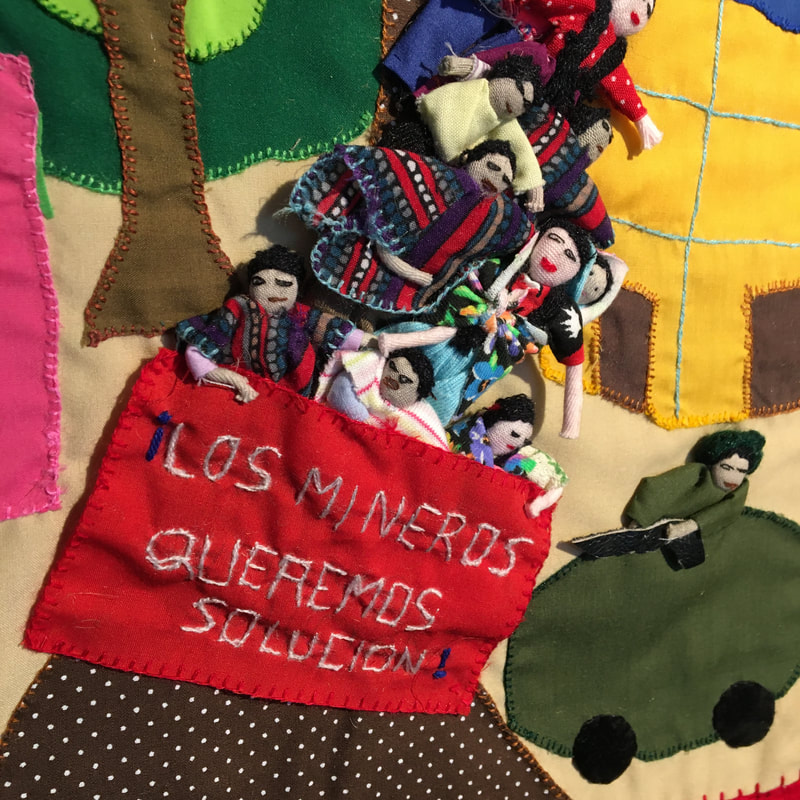
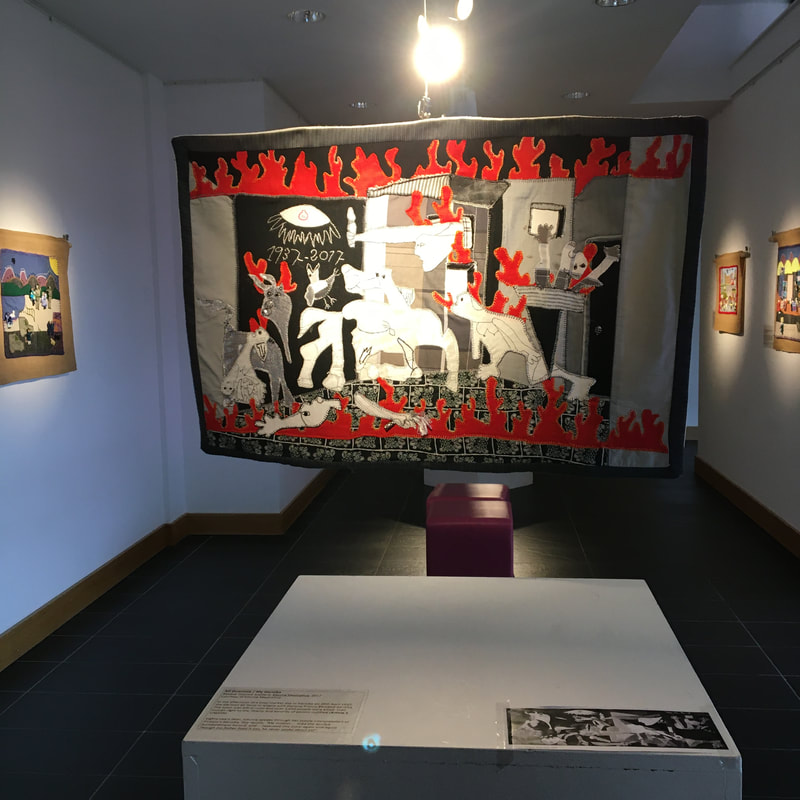
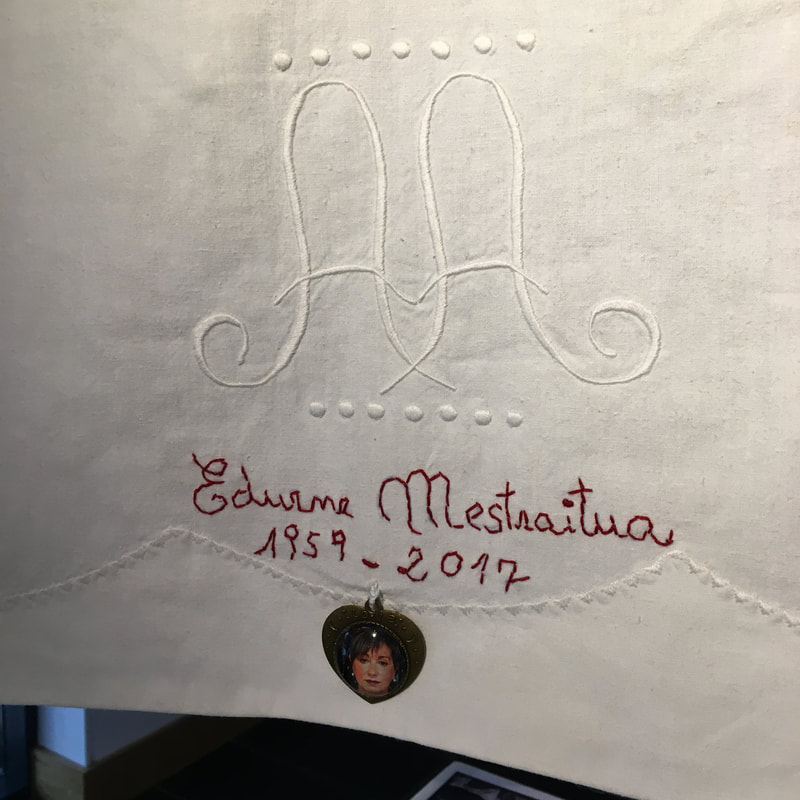
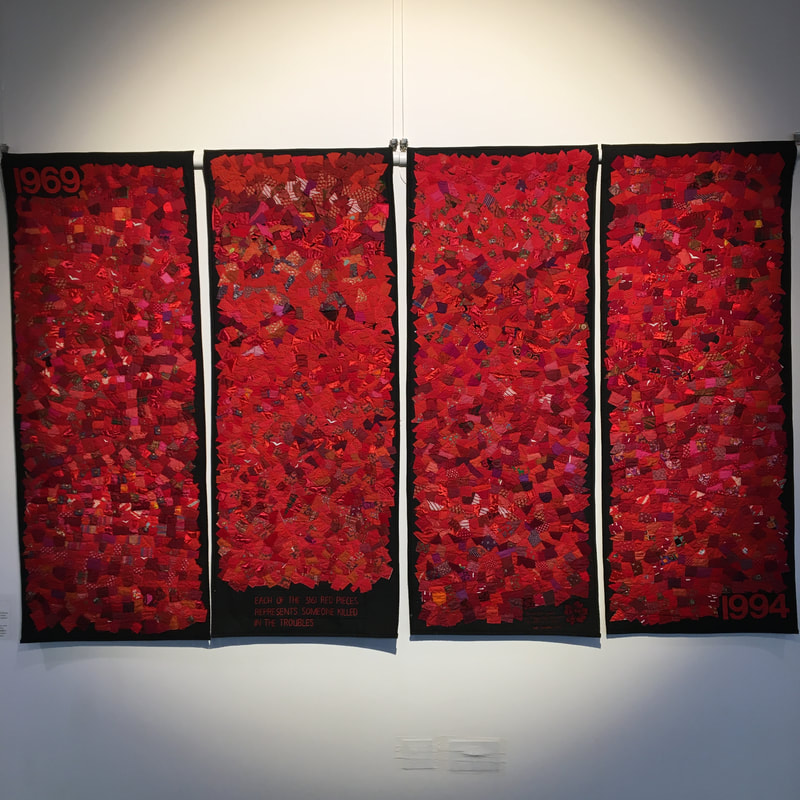
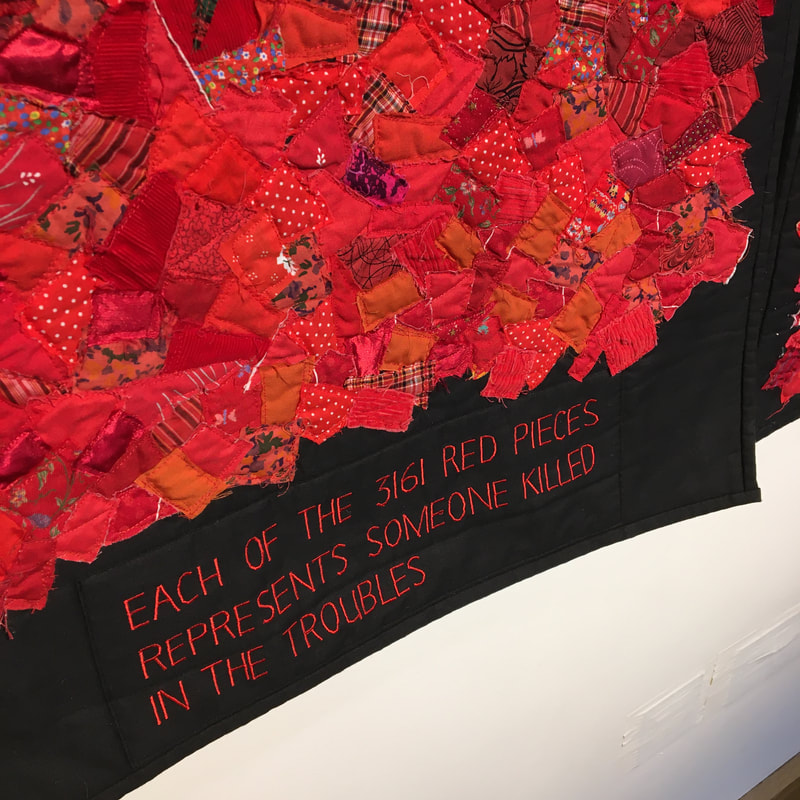
 RSS Feed
RSS Feed